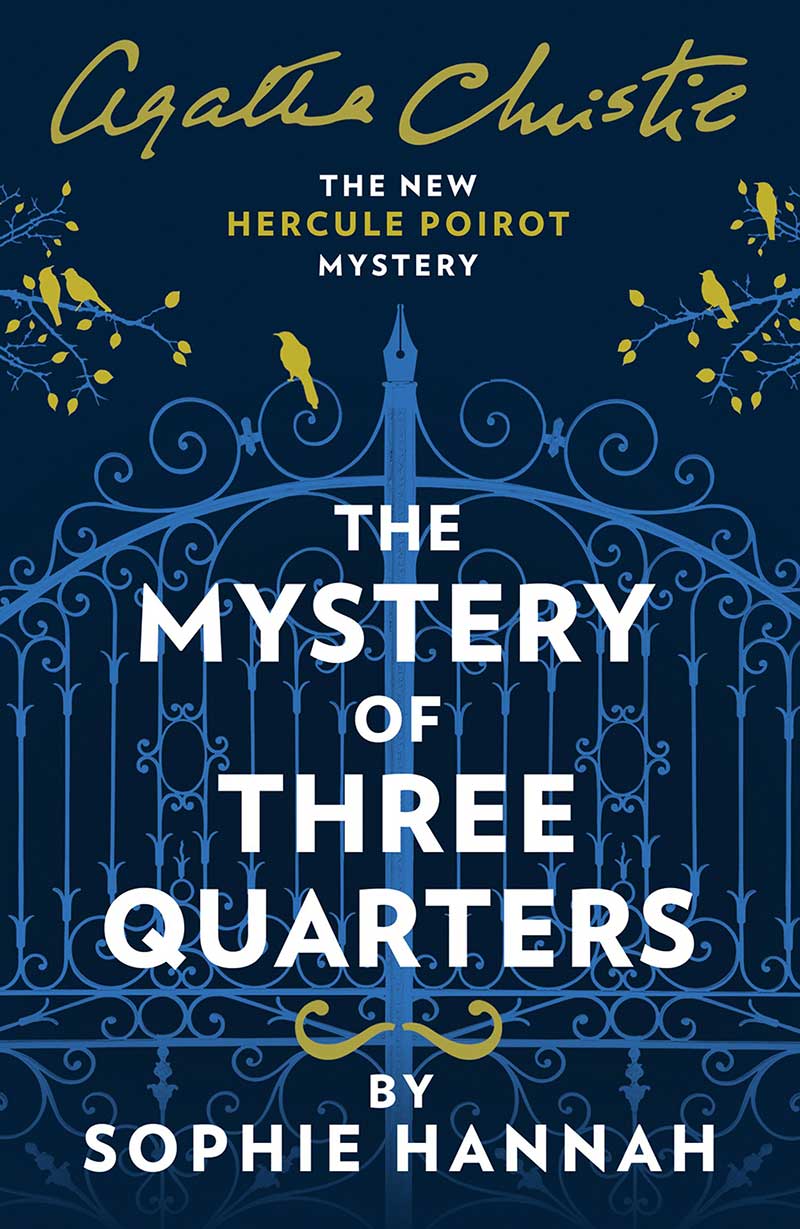It’s a Mystery: “When one is unique, one knows it!”
/The Mystery of Three Quarters
by Sophie Hannah
Morrow, 2018
Sophie Hannah’s third mystery to feature Agatha Christie’s renowned detective, Hercule Poirot, after The Monogram Murders (2014) and Closed Casket (2016), is an elegantly ingenious addition to the series set in the London of 1930. The premise: someone posing as Poirot has sent letters to four people accusing them of having murdered Barnabas Pandy. Two of the recipients of the letters confront Poirot in a rage. Neither has ever heard of Pandy. Sylvia Rule thinks her daughter’s fiancé, Eustace, a man she loathes, is behind the accusation. John McCrodden thinks his solicitor father Rowland, whose positive views on the death penalty have earned him the sobriquet “Rowland Rope” and who roundly disapproves of his son, conspired with Poirot. The other two—Annabel Treadway, Pandy’s granddaughter, who lives in his house, Combingham Hall, and Hugh Dockerill, housemaster at Turville school, which Pandy’s great-grandson, Timothy, attends—refute the charge. They insist that the 94-year-old Pandy accidentally drowned in his bathtub three months earlier.
Poirot, who had never heard of Pandy before these letters, is as intrigued as he is puzzled. Aided once again by his sometime confidant, Inspector Edward Catchpool of Scotland Yard, Poirot’s celebrated sleuthing skills go into high gear: “In the little grey cells of the brain lies the solution of every mystery.”
He engages those little grey cells to determine who has been impersonating him, whether Pandy’s death was indeed “accidental” or if he was the victim of the time honored foul play, and if so, whodunit. While pursuing the answer to who wrote the letters, Poirot becomes transfixed with more puzzling questions:
Why four? And why to these four people? Does the person responsible truly believe that Barnabas Pandy was murdered, or is it some sort of trick or trap? What if he is the murderer as well as the letter-writer? Is it one culprit I must identify, or two?
And of course the biggest question to be answered concerns the connection between Pandy and the four recipients and among the recipients themselves.
Employing his beloved “order and method,” combined with the pursuit of the psychological flaw, Poirot uncovers a host of scandalous secrets. Delving behind many facades, he lays bare some shocking facts that link the recipients to one another in a tangled web of deceitful relationships.
The wrap-up is a nifty variation on one of Christie’s original solutions. Once again, Sophie Hannah demonstrates that she is more than capable of nailing the style and substance of the great lady herself. She has produced another feast for Christie fans.
Irma Heldman is a veteran publishing executive and book reviewer with a penchant for mysteries. One of her favorite gigs was her magazine column “On the Docket” under the pseudonym O. L. Bailey.

